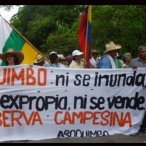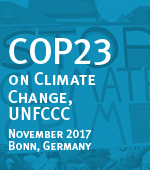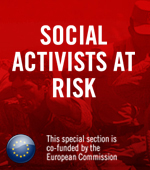English · Español

22 November 2014 | Interviews | Water | Resisting neoliberalism | Human rights | Climate Justice and Energy | Social activists at risk
”Defending our territory in any way we can”
ESMAD threatens with the eviction of mobilized communities protesting against the El Quimbo dam
Download: MP3 (2.8 Mb)
“At this time (7:20 a.m.), November 20th, 2014, the ESMAD appears at (the municipality of) La Jagua, Garzón, (department of) Huila to disarticulate the pacific protest of 20 days as of today, demanding the strict enforcement of the decision of the Constitutional Court T-135. The presence of the municipality spokesperson and the mayor of Garzón was demanded, who up to this point and since the protest started have not been on the site.”
This is the alert from last Thursday on a public statement issued by the ASOQUIMBO (Asociación de Afectados por el Proyecto Hidroeléctrico El Quimbo) and the Movimiento Colombiano en Defensa de los Territorios y Afectados por las Represas “Ríos Vivos”.
The undersigned close the press release stating that they “fear for their integrity”.
The riot police (ESMAD) are a special section of the National Police of Colombia. In short, their function is to repress.
Today it appeared early in the town of La Jagua, Garzón, a zone with a direct impact from El Quimbo, and one of the places where the affected by the dam are blocking the dam construction.
The riot police warned that would evict nearly 150 people that have been blocking for 20 days the operations at the location of the company in charge of El Quimbo: Emgesa, a subsidiary of Endesa from Spain and Enel from Italy.
"We are demanding that they enforce what the Colombian government ruled to protect us and now it is not doing," said to Real World Radio Alexander Naranjo of ASOQUIMBO and the “Ríos Vivos” movement, from the blocking of La Jagua.
He demands compliance with the ruling of the Constitutional Court T-135, which requires Emgesa to make a new census within the communities.
“They simply summoned people to their offices to complete a five minutes form and that was it," he reported.
The community leader also explained that the Comptroller General’s Office carried out a few rulings in 12 acts where it stated, among other things, that there were geotechnical failures in the area of El Quimbo, that there was a forced displacement of communities, and that it undermines the archeological value.
"We demand that these rulings are addressed, that’s our goal,” he said.
Naranjo expressed that though the dam’s construction is nearly 80% done, it has not fulfilled the agreement of the environmental license, including the compensation for affected communities.
“That’s what we’re fighting right now. Also, we demand the minutes where the eviction is ordered and the reason why. We’re waiting for the civil servants.”
Meanwhile Juan Pablo Soler, a member of the “Ríos Vivos” movement, said in an interview with Real World Radio in Colombia: "They continue giving priority to megaprojects, to direct foreign investments, rather than compensating all the social and environmental damage caused by these development projects."
He explained that the blocking action is being performed "because of the failure of the Colombian government to guarantee better conditions for the communities before the projects are fulfilled.
This situation is similar to what communities affected by Hidroituango and Hidrosogamoso (dams) are living today, where the companies are concerned about meeting the schedules of construction but not the agreements with communities, neither ensuring their participation in the decision making process."
Soler said that local communities reject these projects of dirty energy: “That’s why from La Jagua we say ‘no more forced displacement by dams, no more evictions by megaprojects’".
Imagen: radiomacondo.fm







